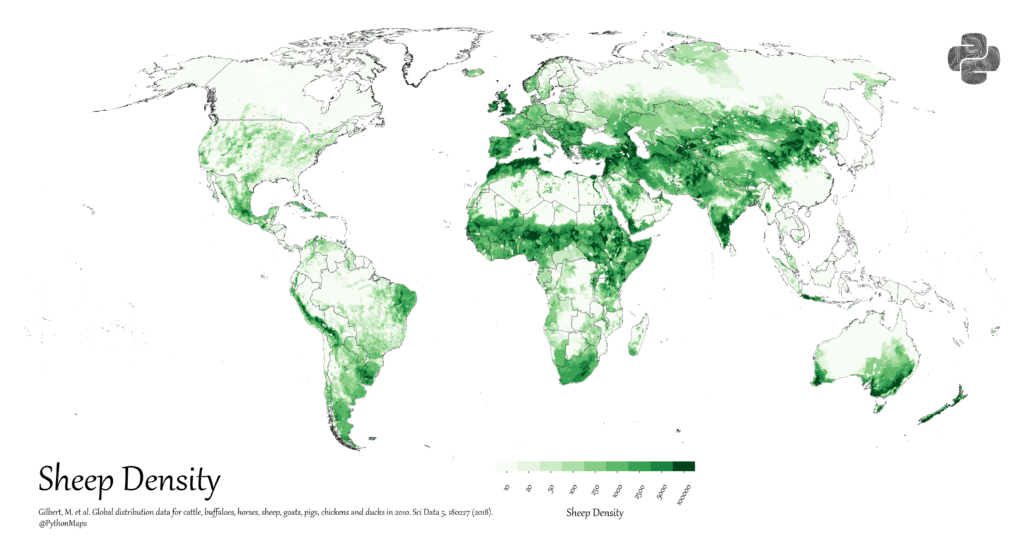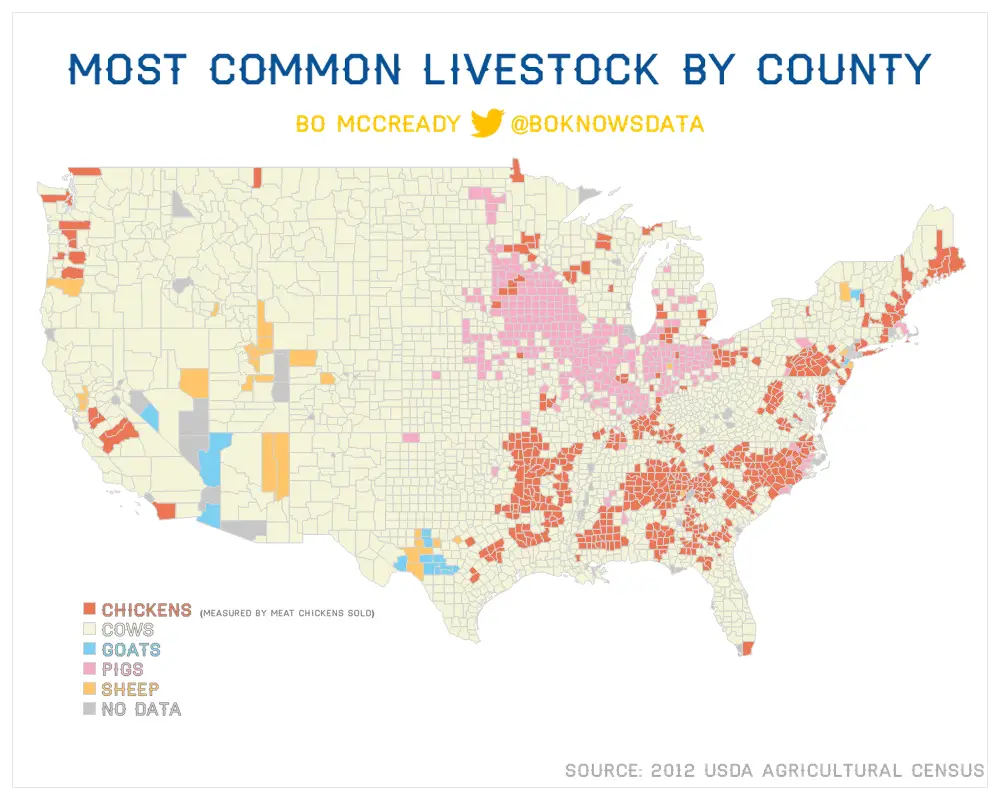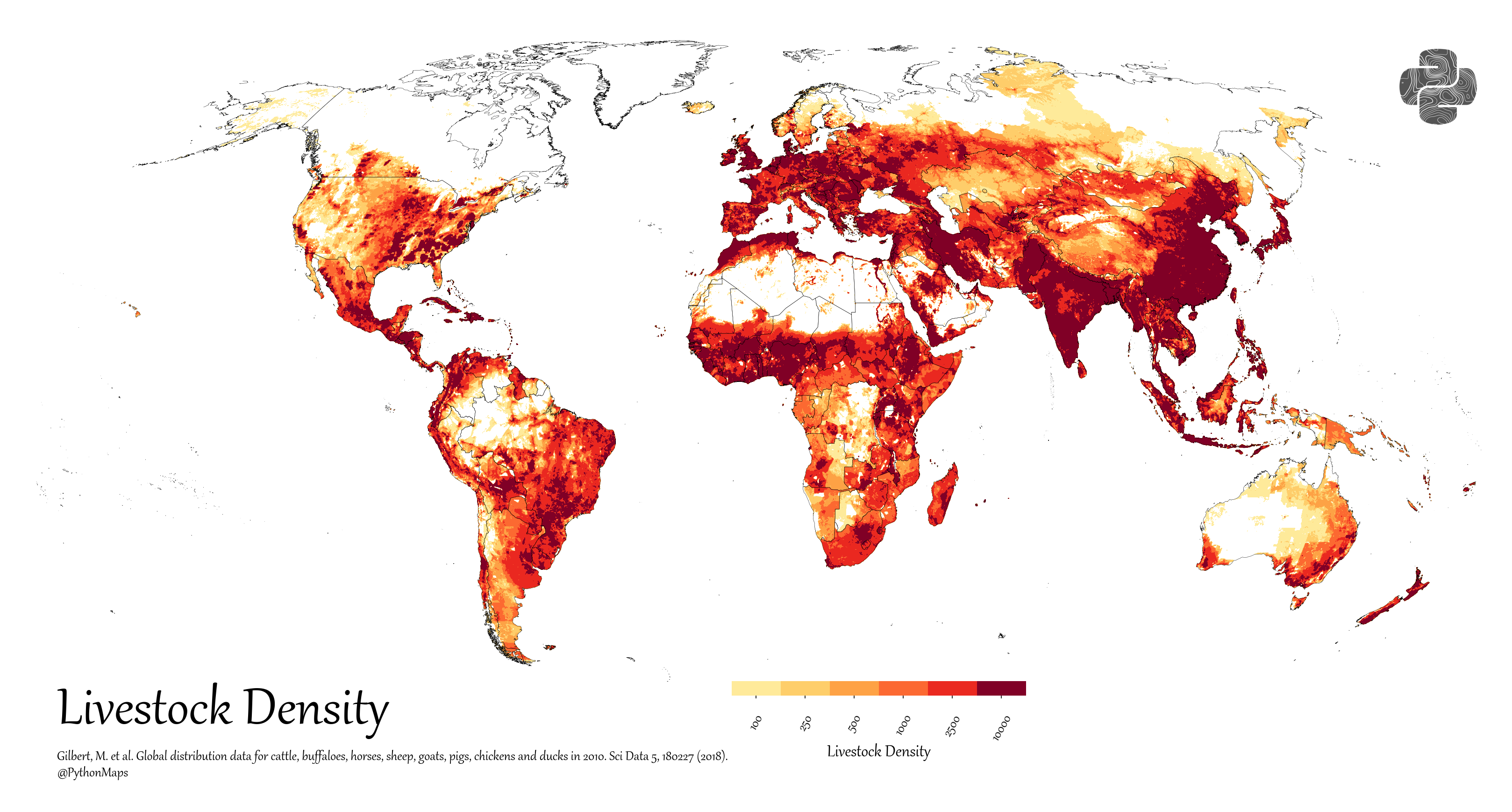Where in the World Are the Most Sheep?
Sheep have been with us for a long time. Archaeological finds suggest they were first domesticated around 11,000 years ago, somewhere in the Fertile Crescent—a region that covers parts of today’s Turkey, Iraq, Iran, and Syria). Since then, sheep have spread across the globe, thriving in places where the land is better for grazing than for crops.
There are now more than 1.2 billion sheep in the world. That might sound like a lot, but it’s far fewer than chickens or even cattle. Still, sheep are important, especially in areas where they’re a big part of local diets, economies, or traditions. And with more than 200 recognized breeds worldwide, they’ve adapted to a wide range of environments—from cold, wet highlands to hot, dry plains.

The world map above, created by @PythonMaps, shows how sheep are distributed by density. And the results are pretty clear: New Zealand, Australia, the UK, Mongolia, China, and India all stand out with very high sheep density in specific regions.
- In New Zealand, sheep farming has long been central. There are still about four sheep for every person, down from a high of 22 per person in the 1980s.
- Australia has large flocks, especially in the southeast. It’s one of the world’s biggest wool exporters.
- The UK, particularly parts of Scotland and Wales, also shows up with dense sheep grazing, mostly in upland and hilly areas.
- Mongolia and China’s west and north, including Inner Mongolia and Xinjiang, have strong herding traditions and lots of grazing land.
- India, especially in states like Rajasthan, also appears prominently on the map.
You’ll also notice dense zones in parts of North Africa, the Middle East, and eastern and southern Africa. In these regions, sheep play a crucial role in smallholder and pastoralist systems.
Even within countries, the pattern isn’t even. You can see clusters of dark green on the map where grazing is more intensive or where sheep fit into the landscape better than other livestock. Sheep tend to do well in places where the land isn’t ideal for crops—hills, drylands, steppes—and they’re often grazed in mixed herds with goats.
Globally, sheep numbers are still growing, but not everywhere. In some countries, herds are shrinking. For example, New Zealand had around 70 million sheep in the 1980s but now has fewer than 25 million. That’s due to shifts toward dairy farming and forestry. On the other hand, China and India have expanded their flocks in response to rising demand for meat and wool.
So, while sheep may not be grabbing headlines like cows or chickens, they still matter, especially in places where tradition, climate, and terrain make them a perfect fit.








